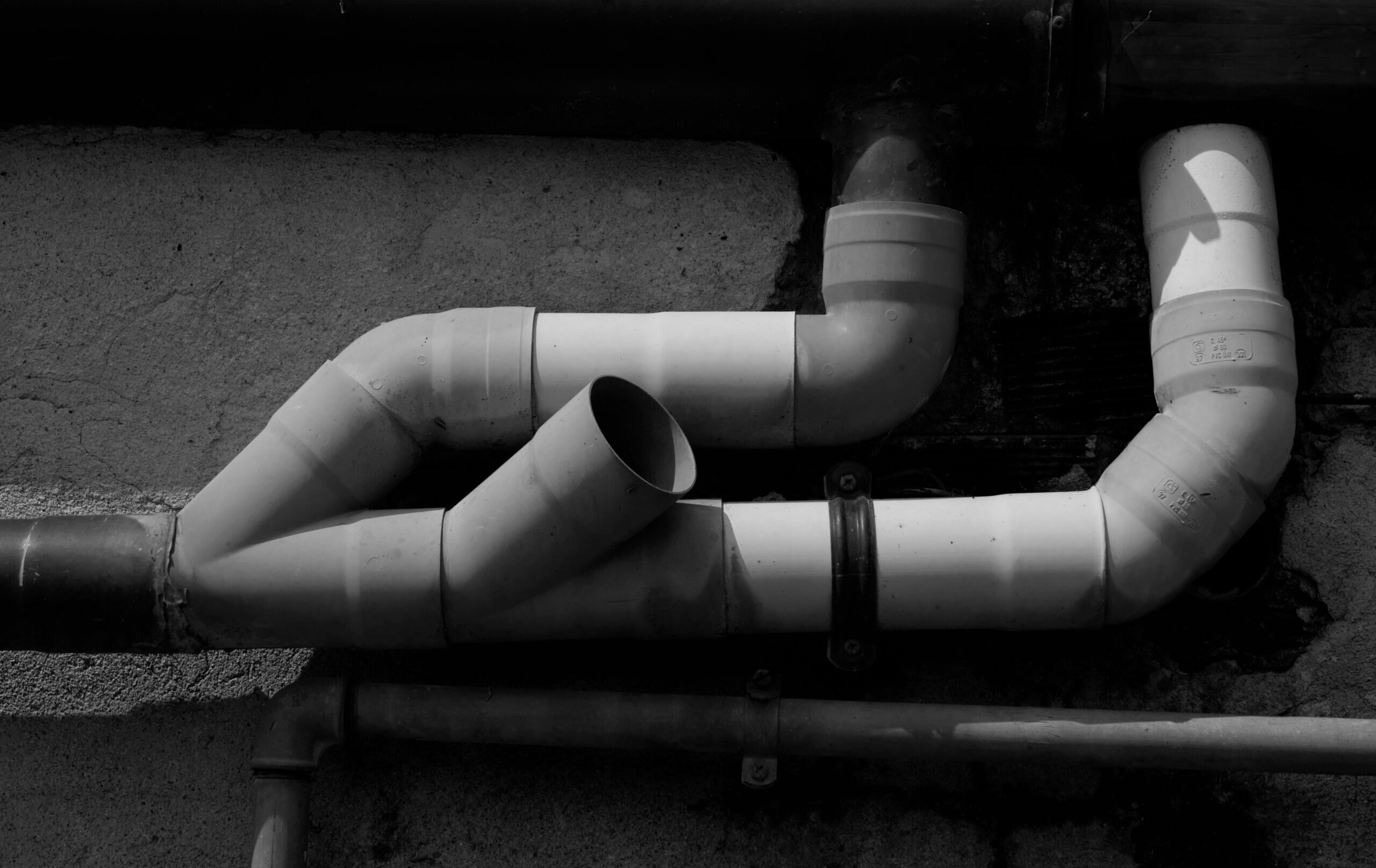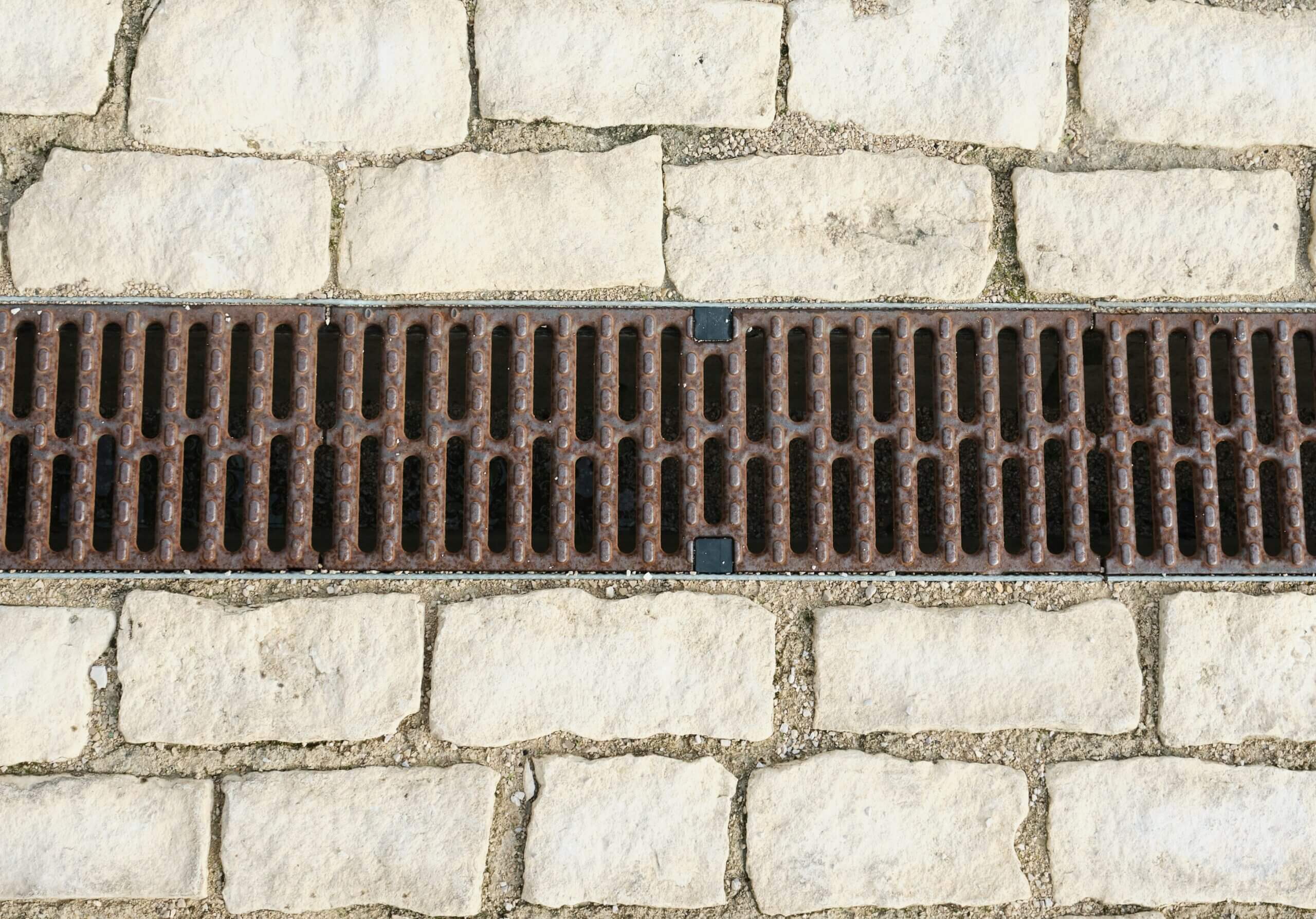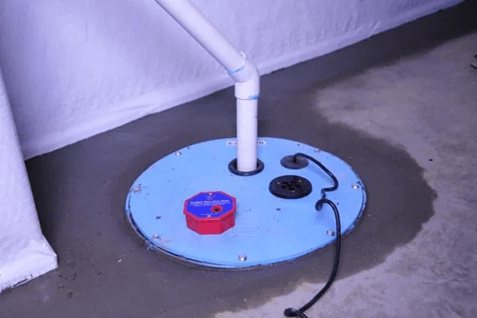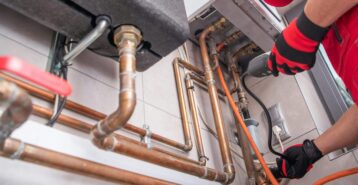What is a Home Drainage System?
A drainage system is essential to a home’s construction. It prevents damage and costly repairs from accumulating water in and around the foundation and structure. Its network of pipes, channels, and vents moves stormwater and wastewater out of and away from the home, directing it to a storm drain, septic system, or municipal sewer line. Without effective drainage, a home is vulnerable to a host of issues, including foundation issues, mold growth, and structural damage.
The time for learning about its parts is not when a branch or sewer line fails and you have water all over your floor. In this article, learn about the types of exterior and interior drainage systems in a house, how they work, and common drainage issues.
How Does a Home Drainage System Work?
Drainage systems are critical to a home’s durability and resistance to water damage. A drainage system, both inside and outside the home, relies on gravity to move stormwater and wastewater along a series of channels, pipes, and plumbing fixtures away from your home’s structure and the property surrounding it.
Interior or structural drainage systems include a variety of components that are installed at a downward angle to remove wastewater from inside the home. Exterior drainage systems encompass several different types of stormwater drainage to collect and redirect rainwater away from homes.

Home Drainage System Components
How well do you know your home’s drainage system? Here is an overview of the components and features that prevent water accumulation in your home.
Drainage Pipes
Within your home’s walls, floors, and ceilings is a network of pipes, lines, and vents that move wastewater to a central collection point like a municipal sewer or septic system.
- Branch Drain Lines: Branch drain lines are pipes that connect fixture drain traps to a home’s main drainage pipes. Installed horizontally at a slight angle to encourage water movement, brain drain lines are typically located above ceilings, under floors, and within walls.
- Vertical Drainage Pipes: These series of pipes move water from a home’s various plumbing fixtures and appliances (showers, baths, toilets, sinks, washing machine) down each level to the main sewer line. A soil stack moves sewage to the main drain line and attaches to a vent that extends through the roof to release odors. A washing machine standpipe facilitates water drainage during operation.
Traps
Traps are the curved parts of the piping below the plumbing fixture drains. Also known as drain traps or p-traps, their purpose is to “trap” or keep standing water in the drain to prevent sewer gases from entering the home. Toilet traps are located within the fixture and operate the same way as drain traps.
Sewer or Septic Line Cleanouts
These cleanouts are capped pipes installed outdoors near a home’s foundation. They provide direct access to a home’s sewer line to allow for cleaning, repairs, and maintenance without requiring extensive excavation.
Main Drain Line
A home’s main sewer line is the pipe that moves your home’s wastewater from its drainage system to a municipal sewer system or septic system.
Pump Systems
For some homes, a sump pump may be necessary to prevent groundwater intrusion. A pump and tank installed in a basement or crawl space collect accumulating water and pump it out and away from the home, usually in a municipal storm drain.
Types of Exterior Drainage Systems
There are several types of exterior drainage solutions that effectively move standing water away from a home’s foundation and structure. These systems use the land’s slope and grading with various materials. Different properties may require different solutions. The size of your property, its characteristics, and climate often mandate a particular type of drainage system. Here are the most common types of exterior drainage systems.
Surface Drains
A surface drain involves a grate-covered basin that collects water from the surface, channeling it through underground pipes to a central repository.
Trench Drains
Trench drains are linear channels made from galvanized steel, stainless steel, or PVC with grated tops. Channels are installed in a sloped direction so gravity moves away from the home and areas of accumulation. You will often see trench drains in pool and spa areas or along garages, driveways, and walkways.
French Drains
A French drain requires excavating a trench in areas on a property with standing water. Inside the trench, gravel or small river rocks surround a perforated pipe that collects water from the surface and uses gravity to move it to a collection point or storm drain.
Dry Wells
A dry well is an excavated hole lined with gravel or similar material to collect and slow the flow of stormwater into the surrounding ground. It is an alternative solution if underground collection and piping systems are incompatible with your property or budget.
Bioswales
A bioswale is an earth-friendly drainage system for your property. It uses natural or excavated shallow trenches, vegetation, mulch, and other erosion control materials to filter and treat stormwater before it gets absorbed into the ground.
Catch Basins
Also commonly known as a storm drain, a catch basin is installed below ground level and includes a top grate to prevent debris from entering. The basin connects to a home’s plumbing system to redirect water to a municipal sewer system or other drainage pathway.
Retaining Walls
A retaining wall requires proper drainage to prevent leaning and other damage. Weep holes, footing pipe drains, gravel, and filter fabric are a few drainage components to consider to maintain a retaining wall’s integrity and lifespan.

Common Drainage System Problems
Diagnosing drainage issues can be obvious or challenging, depending on the scope of the problem and its location. For a thorough evaluation, hiring a professional plumber is usually the best way to go. For reference, here are several of the most common drainage problems in and around the home:
- Clogged Drains: Hair, food, cooking oils, and minerals build up over time and prevent water from flowing freely down drains. Regular drain cleaning will keep them clear and free of debris.
- Sewer Line Breaks: Cracks and leaks to your home’s connection to the city’s sewer main or septic system can impact your property and groundwater.
- Septic Tank Issues: Slow-draining fixtures may indicate drainage problems in a septic system, including an overfull tank or a clogged drain field.
- Tree Root Intrusion: Root growth can cause leaks and cracks in a home’s sewer line and some exterior drainage systems.
- Gaseous Odors: Bad smells coming from fixtures could indicate faulty vents or dry traps.
Solve Your Home’s Drainage Problems
Knowledge is power and potential cost savings when it comes to your home’s drainage system. Understanding its components and common issues can help you avoid significant damage and costly repairs. Clogged drains and smelly odors are often problems you can resolve on your own, however, line breaks and leaks typically require the help of a professional plumber to repair effectively and promptly.
In need of drainage repairs? Use Modernize to find a reputable plumber near you.
Compare top-rated plumbing pros in your area.
Read real homeowner reviews, explore qualifications, and view promotions. Modernize makes it easy to browse professionals and find one that will be perfect for your project.





